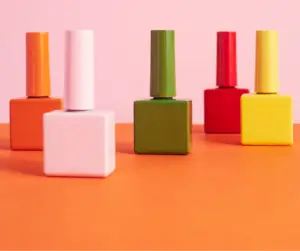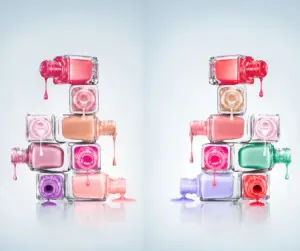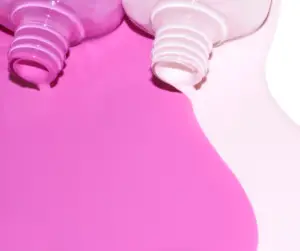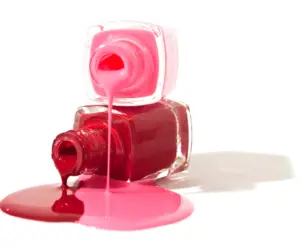
can you mix nail polish colors? YES, Mixing nail polish colors can be an exciting and creative way to customize your manicure or pedicure. Whether you’re looking to match a specific outfit, create a unique ombre effect, or simply experiment with new shades, learning how to mix nail polish colors opens up a world of possibilities. With a few simple techniques and some creativity, you can blend different hues to achieve the perfect custom color that reflects your style and personality. In this guide, we’ll explore various methods and tips for mixing nail polish colors effectively, empowering you to unleash your inner nail artist and express yourself through vibrant and customized nail designs.
how to mix nail polish colors in 6 steps

- Start with a Color Palette: Before you begin mixing nail polish colors, it’s helpful to have a color palette in mind. Consider the mood you want to convey with your manicure and choose colors that complement each other. Whether you’re going for a soft pastel look or a bold and vibrant style, selecting a cohesive color palette will guide your mixing process and ensure that your custom shades harmonize beautifully.
- Experiment with Different Combinations: One of the joys of mixing nail polish colors is the opportunity to experiment and discover new combinations. Don’t be afraid to get creative and try out unexpected pairings. Mix shades together on a palette or a piece of aluminum foil to see how they blend before applying them to your nails. You might be surprised by the stunning colors you can create by combining seemingly unrelated shades.
- Use a Base Coat: When mixing nail polish colors, it’s essential to start with a clean canvas. Apply a base coat to your nails before layering on your custom shades. Not only will a base coat help your nail polish adhere better and last longer, but it will also prevent staining and create a smooth surface for your colors to blend seamlessly.
- Mix Thoroughly: To ensure that your custom nail polish color is evenly blended, mix the colors thoroughly before applying them to your nails. Use a clean nail art brush or toothpick to swirl the colors together until you achieve the desired hue. Take your time and experiment with different mixing techniques until you find the perfect balance of colors.
- Layer and Blend: For more complex nail looks, consider layering and blending multiple colors to create depth and dimension. Start with a base color and then add accents or gradients using lighter or darker shades. Use a nail art brush or sponge to blend the colors together seamlessly, creating a seamless transition between each hue.
- Seal with a Top Coat: Once you’ve achieved your desired nail polish color, seal your manicure with a top coat to protect the colors and add shine. A top coat will also help your manicure last longer and prevent chipping, ensuring that your custom nail polish creation stays looking flawless for days to come.
tips on how to mix nail polish colors
Ever asked yourself, can you mix nail polish colors to showcase your artistic side. With these tips in mind, you’ll be well-equipped to start mixing your own custom nail polish colors and creating unique manicures that reflect your personal style. Here are some tips for mixing nail polish colors:
- Start with Primary Colors: Begin with a basic palette of primary colors – red, blue, and yellow. These colors can be mixed together to create a wide range of secondary and tertiary colors.
- Use a Palette: Invest in a small mixing palette or use a piece of aluminum foil as your mixing surface. This will make it easier to blend and experiment with different color combinations.
- Start Small: Begin by mixing small amounts of nail polish to test out different color combinations. This way, you can adjust the proportions as needed without wasting too much polish.
- Mix Thoroughly: Make sure to mix the colors thoroughly to achieve a uniform shade. Use a clean toothpick or nail art brush to blend the colors together until you achieve the desired hue.
- Experiment with Ratios: Play around with different ratios of colors to create custom shades. For example, mixing more blue than yellow will result in a green shade with cool undertones, while mixing more yellow than blue will create a warmer green.
- Test on a Surface: Before applying the mixed color to your nails, test it on a piece of paper or a plastic surface to see how it dries and whether the color matches your vision.
- Add White or Clear Polish: If you want to lighten or sheer out a color, you can add a drop of white or clear nail polish to the mixture. This will create a softer, more pastel shade.
- Seal the Cap Tightly: After mixing your custom nail polish color, make sure to seal the caps tightly on your nail polish bottles to prevent them from drying out.
- Have Fun and Get Creative: Mixing nail polish colors is all about experimentation and creativity. Don’t be afraid to try out unconventional color combinations or techniques – you might just discover your new favorite nail polish shade!
Color Theory Basics

Color theory is a fundamental concept that plays a crucial role in various forms of art, including nail polish design. Understanding the basics of color theory can help nail artists create harmonious and visually appealing nail polish combinations. Here’s a brief overview of some key color theory principles:
- Complementary Colors: Complementary colors are pairs of colors that are opposite each other on the color wheel. When placed next to each other, complementary colors create a strong contrast and enhance each other’s intensity. For example, blue and orange, red and green, and yellow and purple are complementary color pairs. Mixing complementary colors can create dynamic and eye-catching nail polish combinations.
- Analogous Colors: Analogous colors are groups of colors that are adjacent to each other on the color wheel. These colors share similar undertones and create a sense of harmony when used together. For example, blue, green, and teal form an analogous color scheme. Analogous color combinations are often soothing and cohesive, making them ideal for creating elegant and understated nail designs.
- Color Temperature: Colors can be classified as either warm or cool based on their perceived temperature. Warm colors, such as reds, oranges, and yellows, evoke feelings of warmth and energy. Cool colors, such as blues, greens, and purples, have a calming and soothing effect. Understanding color temperature can help nail artists choose colors that evoke the desired mood or atmosphere in their designs.
By applying these color theory principles, nail artists can create nail polish combinations that are visually appealing and aesthetically pleasing. Whether they’re aiming for bold contrasts or subtle harmonies, a solid understanding of color theory can elevate their nail art to the next level.
Nail Polish Mixing Tools

Wondering if you can mix nail polish colors to create stunning ombre effects? When it comes to mixing nail polish colors, having the right tools can make all the difference in achieving precise and professional results. Here are some essential tools that can streamline the mixing process and help nail artists create custom shades with ease:
- Nail Polish Mixing Balls: Nail polish mixing balls are small stainless steel or glass beads that are added to nail polish bottles to aid in the mixing process. When the bottle is shaken, the mixing balls help break up any settled pigment and ensure that the formula is thoroughly blended. This prevents streakiness and ensures consistent color payoff with each application.
- Droppers: Droppers are handy tools for adding precise amounts of nail polish or other liquid ingredients when mixing custom colors. They allow for greater control over the amount of product added, which is especially useful when experimenting with small batches or subtle color variations. By using droppers, nail artists can achieve more accurate color combinations and avoid overpouring or wastage.
- Mini Funnels: Mini funnels are useful for transferring nail polish or other liquids from one container to another without spilling or making a mess. They come in various sizes to fit different bottle openings and can be particularly helpful when decanting nail polish into smaller containers for mixing or storage. Mini funnels ensure a clean and efficient transfer process, saving time and minimizing product waste.
- Mixing Sticks: Mixing sticks, also known as stirrers or spatulas, are essential for blending colors and ensuring a uniform consistency in custom nail polish formulations. They come in different shapes and sizes, including flat, rounded, or angled tips, to suit various mixing needs. Mixing sticks are ideal for gently stirring pigments and additives into the base polish, allowing for precise color control and customization.
- Palette or Mixing Dish: A palette or mixing dish provides a flat surface for blending and testing nail polish colors before application. It allows nail artists to experiment with different color combinations, ratios, and effects without committing to a full manicure. Palettes can be made of plastic, glass, or ceramic and are easy to clean and reuse for future mixing sessions.
Did you know you can mix nail polish colors to experiment with new styles? By incorporating these nail polish mixing tools into their nail art arsenal, enthusiasts can unleash their creativity and achieve professional-quality results with custom color creations. Whether they’re blending subtle gradients or bold statement shades, having the right tools on hand can elevate their nail art game and inspire endless possibilities.
Customizing Existing Shades
| Customization Technique | Description |
|---|---|
| Glitter Gradient | Create a gradient effect by adding glitter to the tips or base of the nails. Start with a base color, then apply glitter polish from the cuticle or nail tips, gradually fading towards the middle. Finish with a clear topcoat for a smooth finish. |
| Shimmer Overlay | Enhance existing shades with a shimmery overlay by mixing fine shimmer powder or pigment into a clear topcoat. Apply the shimmer topcoat over the base color for a luminous, multidimensional effect. |
| Foiling Technique | Add metallic foil accents to nail polish by applying adhesive glue or foil transfer gel to desired areas of the nail. Once tacky, press metallic foil sheets onto the adhesive for a metallic, foil-like finish. Seal with a topcoat for longevity. |
| Matte Transformation | Transform glossy nail polish into a matte finish by applying a matte topcoat over the existing shade. The matte topcoat dries to a velvety, non-reflective finish, adding a modern twist to any nail look. |
| Nail Art Embellishments | Embellish nails with nail art accents such as rhinestones, studs, or decals. Apply a small amount of clear nail polish to the desired area, then carefully place the embellishment using tweezers or a dotting tool. Seal with a topcoat for durability. |
| Color Layering | Experiment with layering multiple nail polish shades to create custom colors and effects. Start with a base color, then layer complementary or contrasting shades on top for added depth and dimension. Finish with a topcoat to blend and seal the layers. |
| Ombre Gradient | Achieve a seamless ombre gradient by blending two or more nail polish shades together on the nail. Use a makeup sponge to dab and blend the colors from the cuticle to the tip of the nail, creating a smooth transition between shades. Finish with a topcoat for a polished look. |
FAQ’S
Can I mix different brands of nail polish?
- Yes, you can mix nail polishes from different brands. However, keep in mind that the formulas and consistencies may vary, so it’s essential to test the compatibility of the polishes before mixing them on your nails.
How do I prevent my custom nail polish color from clumping or separating?
- To prevent clumping or separation, make sure to thoroughly shake or roll each nail polish bottle before mixing them together. Additionally, consider using nail polish mixing balls or stainless steel beads to help blend the colors evenly.
Can I mix nail polish colors to create unique shades?
- Absolutely! Mixing nail polish colors allows you to create endless custom shades tailored to your preferences. Experiment with different color combinations and ratios to achieve your desired results.
Will mixing nail polish colors affect the finish (e.g., matte, glossy) of the final shade?
- Mixing nail polish colors typically does not affect the finish of the final shade. However, if you’re combining matte and glossy polishes, the finish may vary depending on the proportions of each polish used.
How can I lighten or darken a nail polish color?
- To lighten a nail polish color, add a few drops of white nail polish or clear polish to the existing shade and mix thoroughly. Conversely, to darken a color, add a small amount of black or another dark shade and mix until the desired hue is achieved.
Can I mix nail polish colors directly on my nails?
- While it’s possible to layer different nail polish colors on your nails, achieving precise custom shades may be challenging. It’s generally easier to mix the polishes on a clean surface (e.g., a palette, aluminum foil) before applying them to your nails.
How can I remove custom nail polish colors if I’m not satisfied with the result?
- If you’re unhappy with the custom nail polish color, you can remove it using nail polish remover. Simply saturate a cotton ball or pad with nail polish remover and gently wipe away the polish from your nails. You can then start fresh with a new color or combination.
Can I mix nail polish colors to match specific outfits or occasions?
- Yes, mixing nail polish colors allows you to create custom shades that complement your outfits or suit special occasions perfectly. Consider experimenting with different color combinations to achieve the ideal match for any event or ensemble.
